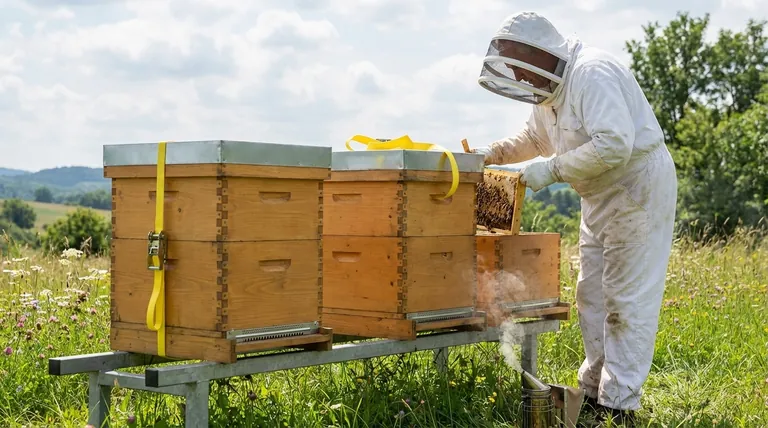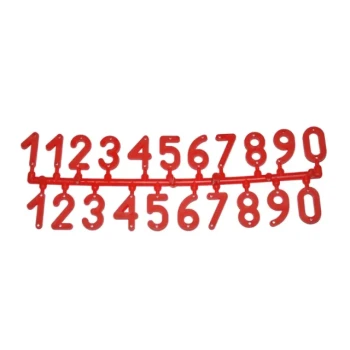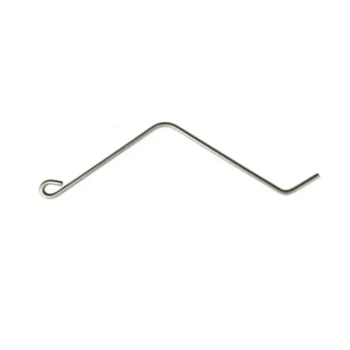For a beginner beekeeper, the ideal number of hives to start with is two. While it may seem logical to start with just one to minimize cost and effort, this approach significantly increases your risk of failure and robs you of essential management options in your critical first year.
The core principle is not about managing more bees, but about creating a support system. With two hives, you can compare colony health and share resources between them, dramatically increasing the odds that at least one—and likely both—will survive your learning curve.

Why Starting with One Hive is a Common Mistake
Opting for a single hive is a gamble that places all your investment, time, and hope on the success of one colony. This creates a high-pressure situation with very little room for error.
The Lack of a "Control" Group
With only one hive, you have no baseline for normal bee behavior. You will constantly wonder, "Is my colony weak, or is this just what a new colony does?"
This ambiguity makes it nearly impossible for a beginner to diagnose problems early.
No Resources to Share
A hive can fail for many reasons, such as becoming queenless or having insufficient food stores. These are often correctable problems, but the solutions require resources from another healthy colony.
If your single hive loses its queen, your season is effectively over. You have no way to provide them with eggs from another hive to raise a new queen.
An Abrupt End to Your Season
The unfortunate reality is that many beginners lose their first colony. If you start with only one hive and it fails, you are left with empty equipment and a sense of discouragement.
This all-or-nothing approach is a primary reason why many potential beekeepers quit after their first attempt.
The Strategic Advantages of Two Hives
Starting with two hives fundamentally changes the dynamic from one of pure chance to one of active management and problem-solving.
A Built-in Management Tool
Having two hives side-by-side is the single best learning tool for a new beekeeper. You can directly compare the population, temperament, and productivity of each colony.
One hive might be building up quickly while the other lags. This immediately signals that you need to investigate the weaker hive for potential issues.
The Power to Equalize Colonies
This is the most critical advantage. You can use the stronger colony to support the weaker one, a technique known as equalizing.
If one hive is weak, you can move a frame of brood (developing bees) from the strong hive to boost its population. If one is short on food, you can give it a frame of honey from the other. This gives you the power to intervene and save a struggling colony.
Doubling Your Learning Experience
Each colony has its own unique "personality." By managing two, you gain a broader understanding of bee behavior and colony dynamics far more quickly than you would with one.
Understanding the Trade-offs
While starting with two hives is the strong recommendation, it's important to acknowledge the practical considerations.
The Initial Investment
There is no denying that two complete hive setups, plus two packages of bees, represent a higher upfront cost than one.
However, this initial cost should be weighed against the much higher probability of having a successful season and viable colonies for the following year. Losing your only hive is the most expensive outcome of all.
The Time Commitment
Managing two hives does require more time than one, but it is not double the work. Most of the time is spent on preparation and cleanup.
A routine inspection of a second hive typically adds only 15-20 minutes to your process once you are organized.
Setting Your First-Year Goal
Your primary objective in the first year is not honey production; it is learning how to successfully guide your colonies through a full season and prepare them to survive the winter.
- If your primary focus is learning the fundamentals with minimal risk: Starting with two hives is the non-negotiable standard for success.
- If your primary focus is establishing a strong foundation for future growth: Beginning with two hives allows you to potentially have two, three, or even four strong colonies by the following spring through splitting.
Starting with two hives transforms beekeeping from a game of chance into a practice of skill and strategy.
Summary Table:
| Starting Hives | Key Advantage | Main Risk |
|---|---|---|
| 1 Hive | Lower initial cost | High risk of failure; no resources to share |
| 2 Hives (Recommended) | Built-in support system; ability to compare and equalize colonies | Higher initial investment |
Ready to start your beekeeping journey with the right foundation?
HONESTBEE supplies commercial apiaries and beekeeping equipment distributors with high-quality, durable beekeeping supplies through our wholesale-focused operations. Whether you're a new beekeeper starting with two hives or a distributor stocking up for the season, we provide the reliable equipment you need for success.
Contact HONESTBEE today to discuss your wholesale beekeeping supply needs and set your colonies up for a thriving future.
Visual Guide

Related Products
- Professional Galvanized Hive Strap with Secure Locking Buckle for Beekeeping
- Durable Plastic Hive Number Set for Beekeeping
- Heavy-Duty Nylon Beehive Hive Strap with Stainless Steel Cinch Buckle
- Versatile Ratchet Hive Strap with S-Hooks for Secure Fastening
- Heavy Duty Ratchet Hive Strap
People Also Ask
- What are the types of Emlocks available? Choose the Right Strap for Hive Security
- What maintenance is required for hive straps? A Guide to Cam Buckle vs. Ratchet Strap Care
- How can beekeepers secure the top cover of a hive? Protect Your Colony from Wind and Weather
- What are the two styles of hive straps? Choose the Right Strap for Your Hive Security
- What is the best length for straps used around beehives? Why 12 Feet is the Industry Standard



















